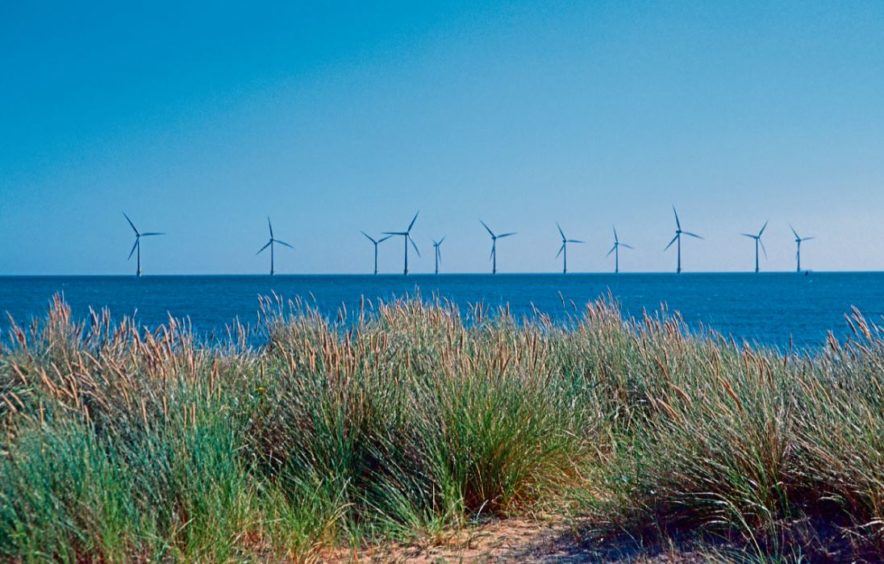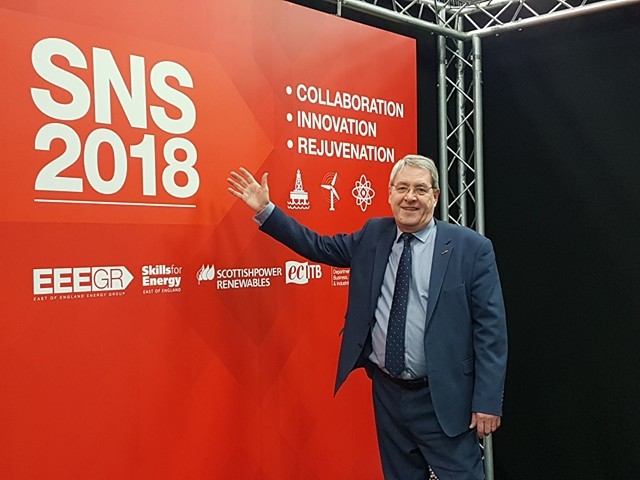
As a mixed energy centre, the southern North Sea (SNS) is probably the busiest, most resilient part of the UK Continental Shelf.
It is arguably leading the energy transition way for the UK, with multi-hundred to gigawatt class wind farms rubbing shoulders with significant gas production.
“We’re very much in the ascendancy,” said Simon Gray, chief executive of trade organisation East of England Energy Group (EEEGR).
“We now have off the east coast of England something like 56% of the UK’s offshore wind generation capacity and this is expected to go on increasing through to 2030.
“As the UK’s offshore wind capacity increases, we’re set to remain around the 50%-plus level.
“The reasons for that are simple and include shallow waters, a decent seabed for installing turbines, a good wind resource and easy access to the largest electricity markets in Britain: London, the south-east and the Midlands.
“And of course considerable quantities of natural gas are still being produced from the Southern Gas Basin, where new field discoveries continue to be made, albeit those are tight resources and therefore harder to develop and produce.
“We still have some of the largest volumes of decommissioning on the UKCS.
“The SNS is where the UK’s offshore story began in terms of gas and a considerable number of the platforms still out there are 30, 40, 50 years old.”
Change is in the air for the membership of EEEGR, whose supply chain membership is probably the most diverse of any energy trade body in the UK.
“Transition is the word on everyone’s lips,” Mr Gray said. “And that’s exactly where we are.
“We’re the part of the UK that is experiencing the greatest migration from fossil fuels towards renewables. And that process in theory needs to have been completed by 2050.
“Although gas is currently on the back foot because of weak prices, it still accounts for 28% of UK electricity generation compared with 2.3% from coal, 20% from nuclear and wind nearly 30%.”
In terms of indigenous UK gas production, the SNS accounts for around 30% via the Bacton terminal in Norfolk.
A major operation is under way to protect this strategically important facility from being engulfed by the North Sea as sea levels rise.
The £20 million-plus “sandscaping” is intended to protect a 5.6km stretch of coast by rebuilding beaches using huge volumes of sand.
Bacton is absolutely vital to current gas basin production and future development potential. And it handles significant volumes of imported gas via the North Sea’s hugely important interconnector network.
Gas has a critical transitional role to play for the next couple of decades at least and the SNS current revival is being usefully stimulated by the Oil and Gas Authority’s Southern
North Sea Tight Gas Strategy published in June 2017.
In addition the SNS Rejuvenation (Special Interest Group), commissioned through EEEGR in conjunction with the OGA, is being used as a vehicle to push forward.
Over the past 50 years, a total of 40 trillion cubic feet has been produced from beneath the UK Continental Shelf, with several more tcf to go.
Today, the basin continues to produce about 1.3bcf per day and remains home to many producing gas fields with associated infrastructure.
Two years prior to the OGA publishing its strategy, Oil and Gas UK commissioned a Joint Industry Project (SNS Rejuvenation JIP).
The purpose was to develop a broad understanding of the remaining potential within the SNS and furthermore characterise this potential, including barriers to development.
One of the key findings of the JIP was to identify a substantial volume of tight gas remaining within existing producing gas fields, undeveloped discoveries and prospects.
It identified that at least 60% of undeveloped discoveries within the SNS and 50% of known prospects are tight gas accumulations.
Further to this, the OGA holds up to date figures through regular stewardship reviews with operators across the SNS.
In total, the OGA conservatively estimates some 3.8 tcf of tight gas could be accessible from such opportunities.
Drilling activity is projected to increase in the short to medium term, including development wells but also exploration and appraisal wells.
To describe the SNS gas industry as buzzing with activity is probably an overstatement, but it’s certainly ticking along, helped by the concerted drive by the OGA to ensure resources are in the right hands.
The big operators aren’t out of the picture – far from it. Look at BP’s considerable position in the carboniferous and Shell’s interest is reviving again.
For example, the super-major has just completed a 50% farm in to the P2437 licence held by Cluff Natural Resources, attracted by the possibilities of the Selene gas prospect, from which about 50m barrels are hoped to be recoverable.
Cluff retains a 50% stake and will act as the licence administrator until a well investment decision is made. Once that takes place, Shell will cover 75% of the costs for an exploration well of up to £20.7m.
In May, Shell struck a deal with Cluff to acquire 70% of the Pensacola gas prospect, with possible reserves of up to 100m barrels. Last month, Cluff reported a seismic survey of the Pensacola area had been wrapped up by Shearwater GeoServices.
If results live up to hopes, then a decision on a contingent exploration well at Pensacola can be expected in the second half of next year.
Around the time of Offshore Europe, Independent Oil and Gas (IOG) hopes to be in a position to make a final investment decision on its core cluster project phase-one, with contract awards following quickly.
Under its revised phase-one field development plan, first gas should flow from the Southwark field in July 2021.
It was recently reported by Energy Voice that: “IOG now plans to accelerate drilling and completion of the Elgood subsea well allowing production from Blythe and Elgood to start simultaneously, three months after Southwark.
“Although this will mean a higher capex spend prior to phase 1 first gas, it should boost production during winter 2021, given relatively high forecast initial rates from Blythe and Elgood.”
In July, IOG agreed to farm out 50% of the core area licenses to CalEnergy Resources, which paid an initial consideration of £40m and a further £125m of IOG’s costs for the first two phases of the project.
The core project’s estimated reserves of just over 300 bcf distributed through six mini-fields, the remaining three being Southwark, Nailsworth and Elland. An upside of a further 100-plus bcf of gas is apparently possible.
Linked with this project, IOG has signed a sale and purchase agreement to acquire the Thames Pipeline reception facilities at Bacton from Perenco, Spirit Energy and Tullow Oil.
It means that, on completion, IOG will own the Thames Pipeline and the reception facilities at Bacton, which will be refurbished and recommissioned.
Speaking of Spirit Energy, that company has also generated an interesting bunch of headlines in recent weeks including that the OGA was forced to intervene in its dispute with Neptune Energy over tie-back access to the Cygnus Alpha platform operated by the latter firm.
Spirit wanted to develop its Pegasus field late this year, but has now deferred the FID while the regulator investigates.
Pegasus has recoverable resources of around 83 bcf of gas – a small but useful prize.
Back in February, Neptune requested a “temporary halt in development” over potential “limitations” to the tie-back scheme and a lack of physical capacity for Pegasus at Cygnus.
The regulator will normally only get involved in disputes if there is evidence of a “failure of meaningful commercial negotiations”. Clearly it sees good reason to get the dispute resolved.
Although Cygnus was Spirit’s preferred development option, it may seek to reassess alternatives, depending on the outcome of the OGA discussions.
Another eyebrow raiser regarding Spirit was a recent comment by an analyst at Westwood Global that it might be a rather large mouthful for potential buyers because of its size.
What sparked the observation was the announcement by Spirit’s majority stakeholder Centrica that it planned to “dispose of its 69% stake” by the end of next year.
Alyson Harding, technical manager for north-west Europe at Westwood, said the sale of Spirit, if it goes through, will represent one of the last utilities firms, in this case Centrica, to exit the North Sea upstream sector.
Having swarmed into offshore gas around 10 years ago, all have switched to offshore wind, which is the only part of the UK’s energy industry that can be genuinely described as booming.
A growing number of companies in the UK oil and gas supply chain are belatedly hedging their bets by grabbing wind-related business than ever before.

